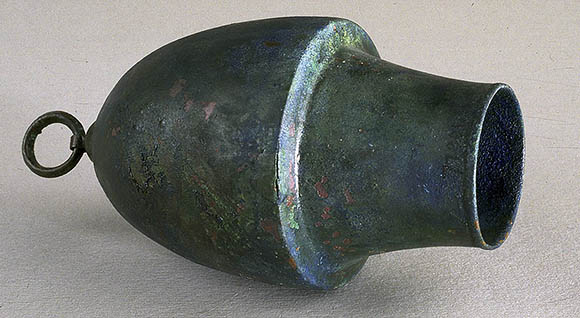Materials:
Bronze
Dimensions:
13,2 x Ø0,6 cm
Setting:
Napoli MAN; inv. 77789
Provenance:
Pompeii
Date:
First century AD
It has a deep body in the form of an elongated ovoid, with a narrower mouth, neatly demarcated from the body, with a rim in a thin collar. The function of this object, already documented in Greece during the first century BC, was known from other examples also found in Pompeii and in other parts of the Empire (Germany, France), was to eliminate deleterious humours from an ailing body. Its use was linked either to blood-letting or other uses, such as inducting heat to the ailing part of the body. Usually made in bronze and sometimes furnished with a hook for hanging it, the ventosa was named cucurbitula for its cucurbit-like form (like that of a small squash). It was sometimes made of bone, or rarely, silver, as is recorded by Celsus (first century AD), criticising the useless ostentation of the doctors who used it.


